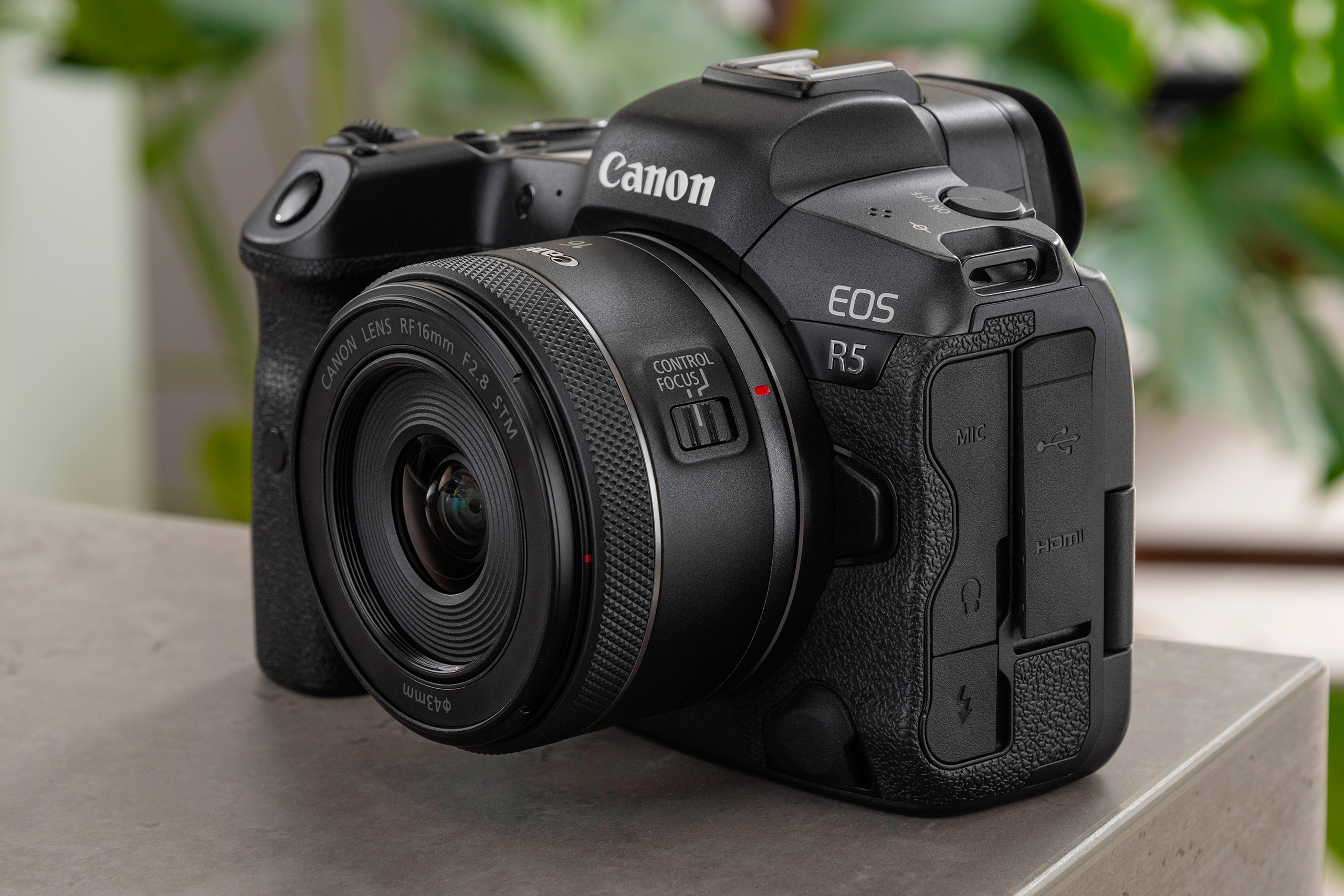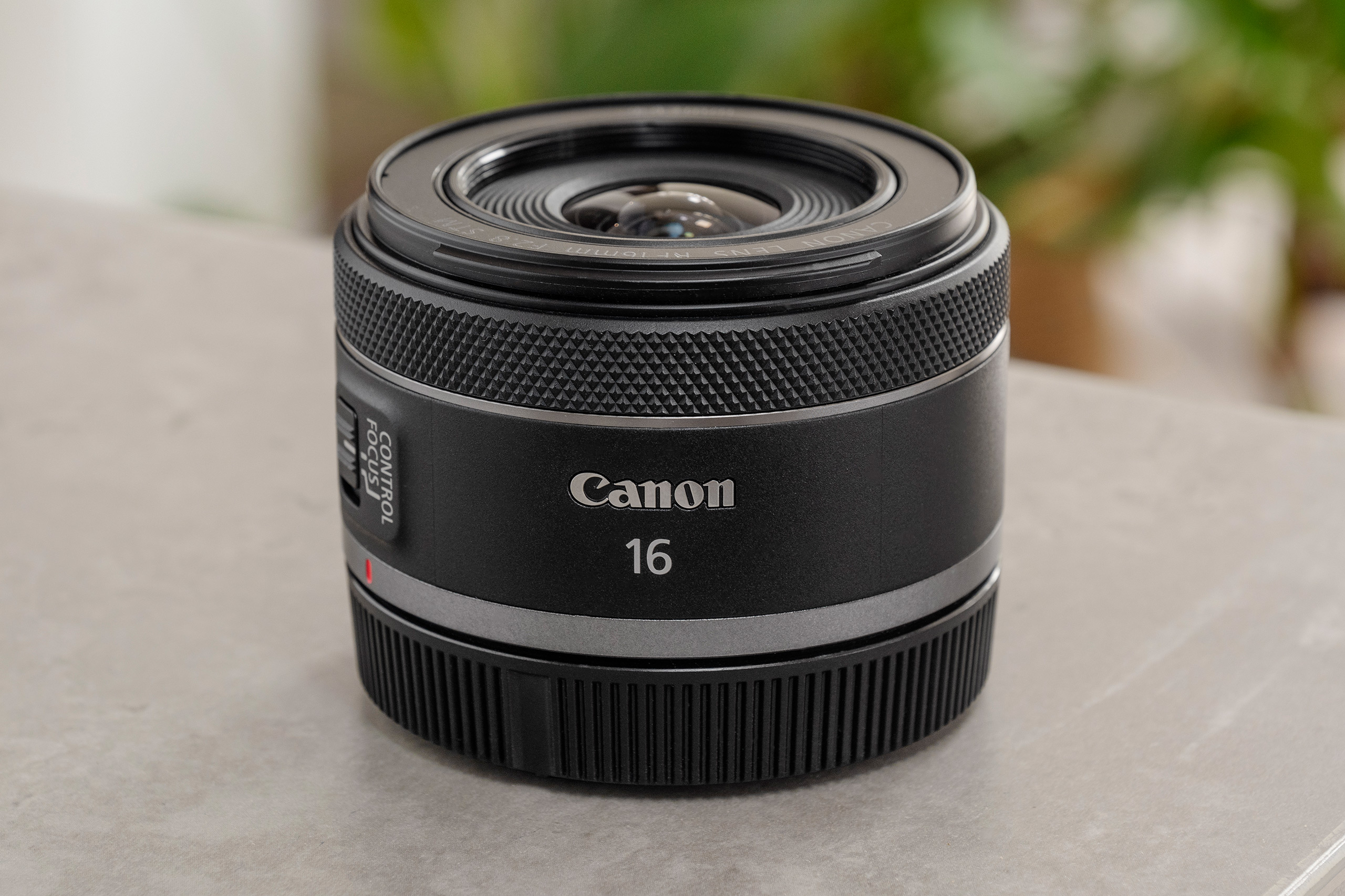There are plenty of photographers who will go through an entire career behind the camera without the thought of a 16mm lens ever crossing their mind. It is such an extreme wide angle – though of course not the widest available – that it falls well outside of the ‘general purpose’ bracket. Some though will be delighted at the prospect of such an all-encompassing angle of view and will be thrilled too that this particular example from Canon combines tiny dimensions and a relatively affordable price.
Those traditionally interested in 16mm lenses tend to be photographers shooting architectural interiors or the night sky, though Canon suggests this also as a suitable lens for people who record themselves talking into the camera from arm’s length. Indeed the wide angle will allow the vlogger to remain the primary subject in the frame while including a good deal of that all-important location – though how we will look at the end of the process will be another matter.
Canon RF 16mm F2.8 STM Features
The key elements of the Canon RF 16mm F2.8 STM are its focal length, its size and it price. Lenses this wide for full frame cameras are not so common, and it is indeed even rarer to find one with such dainty dimensions. This little lens uses nine elements in seven groups and includes an aspherical element to help with image sharpness and curvilinear distortion. This is one of Canon’s PMo elements which are made by injecting plastic resin into a mould to create a means of making aspheric lenses more quickly and at a lower price – allowing a lens like this to feature one.
The STM in the name also indicates a degree of cost balancing as the stepping motor used is a more affordable version of the company’s USM Ultrasonic Motor technology. STM drives are very quiet, which makes them ideal for lenses designed for video, but they are perhaps not quite as fast as USM versions. Speed and accuracy of focus may not be as important in a focal length as wide as this though, as enhanced depth-of-field will often cover minor errors. At the same time however, if this lens is to be used for vlogging it will be operating at close focus distances where errors will be more visible – so good performance is still a requirement. Crucially too for vloggers and videographers, Canon promises smooth iris transitions so that adjustments to the aperture during filming will not be noticeable either in the footage or on the soundtrack.
With a focal length as wide as 16mm users will be able to maintain an expansive view even when using their cameras in cropped video modes at higher frame rates. While cropped video is great for making a long lens longer, it can sometimes steal the soul of a wide angle, but this one has plenty to spare.
Canon RF 16mm F2.8 STM Build and Handling
This is a plastic bodied lens, but one that feels well-made and solid enough. Although it is a lightweight 165g it doesn’t feel empty, so you really do feel like you are getting something for your money. The diameter of the lens is 69.2mm and it protrudes 40.2mm from the body when switched off. When in active service the forward section of the lens pops out a bit and whizzes backwards and forwards during focusing – adding a maximum of about 15mm to the length. Considering the width of the barrel and housing it is a bit of a surprise that the forward element is so small and that it is nowhere near as convex as you might expect it to be. The filter ring is a tiny 43mm, just like that of the RF 50mm f/1.8 STM – compact camera territory.
The lens is styled very much like Canon’s other affordable RF 50mm, 35mm and 85mm STM lenses, with a smooth barrel close to the mount and a heavily knurled focus ring behind the front element. A switch on the side of the barrel marked Focus and Control allows us to customise the focusing ring to either focus the lens or to perform as a control ring for 17 features, such as exposure compensation or apertures. Even though it is small and light it feels very comfortable and at home on the relatively large Canon EOS R5 body.
Autofocus
Autofocusing in a super wide lens such as this isn’t too much of a challenge as the margin for error at normal distances is such that even approximate focusing will look fine. Canon’s focusing system in the EOS R5 is first class of course, so it would take a pretty poor lens to cripple it enough that we would notice. The 16mm performed very well during the test, and was able to keep up not only with acquisition speeds but also was able to allow the EOS R5 to track both small and dramatic movements.
Close-distance subjects, such as a vlogger’s face, do actually provide quite a challenge, but the lens seems more than up to the task, with the system detecting even my face and managing to keep looking at it for longer than most humans would. In video modes, even at 25fps, the AF is responsive and quick to lock on.
Canon RF 16mm F2.8 STM Image quality
It’s fair to say that image quality is not the strong point of this lens. Users will find that away from the centre of the image area detail is soft and subjects are heavily distorted. It may be the case that the 45-million-pixel sensor of the Canon EOS R5 that I used the lens on asks rather too much of this low-cost lens, but even when viewed at smaller sizes the there is a lack of clarity about the pictures and detail looks muddled. In the corners there’s a sense that the subject is trying to rush away out of the frame, and noise appears as streaks rather than as dots.
The feeling of the picture being stretched reaches well into the frame unfortunately, and I found human heads take on a tear-drop shape that bends off towards the diagonal and leaves them looking pretty odd.
Some of these elements improve when the automatic profile corrections are switched off, but at the same time the issues that arise make it clear way the corrects are so dramatic. Sharpness does improve without the corrections and subject definition away from the centre is very much improved. However without the automatic corrections we are left with a subject dramatically distorted by overly-generous barrelling. Sometimes in natural subjects barrelling isn’t noticeable as the absence of straight lines in the frame disguises the distortion, but in this case the middle of the image protrudes like a big belly. In some landscapes I found it better to allow the natural distortions of the lens, but in scenes that contain built structures that just doesn’t work.
You will notice too that when switching between the corrected view and the uncorrected view a good deal of cropping is done to remove the concave edges of the frame – and a lot of the picture goes with it. Users will need to familiarise themselves with the degree of loss according to the methods they will use in post-production, and allow for it during composition or re-cropping after the event.

Mushrooms, uncorrected image, showing vignetting in corners, close focus, 1/160s, f/6.3, ISO1600, 16mm with R5
Vignetting is another major issue that we need to be aware of. In close subjects the degree of corner shading is such that it appears we are well outside of the image circle of the lens when we leave the auto corrections off. With them switched on this disappears – partly through cropping and partly through corner brightening. Lifting shadows in software as we all know increases the visibility of image noise, so this is a less than ideal solution. It seems too that the vignetting profile applied by Photoshop is a little primitive – or that it is applied after the barrel distortion is corrected – as we can end up with very uneven skies.
And then there’s chromatic aberration which sees coloured fringes hugging even moderate-contrast edges in areas away from the centre of the frame. These show to one degree or another with the auto corrections on or off.
Canon RF 16mm F2.8 STM Verdict
There are a number of very good reasons that specialist lenses often cost a lot of money, and when they don’t we need to tread carefully. For an extreme wide angle from a marque brand this RF 16mm F2.8 STM does not cost very much at all. Clearly the STM AF system presents a saving, as does the PMo aspherical element and the plastic body, and the f/2.8 maximum aperture is relatively moderate in this day and age. It seems thought that the greatest saving has been made in an optical design that only half corrects common issues and leaves the rest to the ‘free’ effects of software. And sadly the in-camera and in-software corrections create as much distortion and introduce as many problems as they fix. It really isn’t an ideal solution.
Most modern lenses use an element of post-production to correct certain aspects of image quality and to allow advantages in other areas, but in this case the balance is such that the software just can’t fix the issues it is asked to deal with. If you manually correct your images and only need to use them at small sizes or if you intend to shoot video, where the 16:9 frame will exclude a good deal of the worst problems, then this lens may well suit your needs.

















